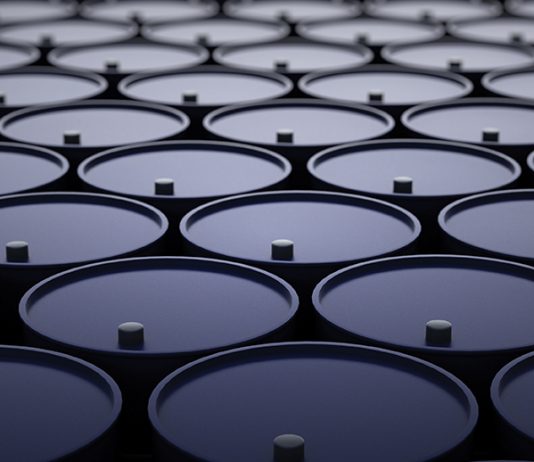
10 Things You Should Know About Oil and Gas Today
The Big Story
Having decided on Monday to forego the consideration of a draft order on prorationing due to lack of support, the three members of the Texas Railroad Commission focused Tuesday’s hearing on the issue of natural gas flaring in the state.
Commission Chairman Wayne Christian stated that flaring is “not something that is going to go away when the industry recovers, unless we do something about it now,” and instructed the industry’s state trade associations to come back to the RRC’s June 16 hearing with recommendations on how the Commission and industry can work together to reduce flaring in the state.
Testifying at the hearing, Colin Leyden, Director of Regulatory and Legislative Affairs for EDF, said that “Flaring has remained high on the list of industry and stakeholder concerns on both sides of the proration debate. In fact, the calls for action have only become louder. It would be a huge mistake for companies or the commissioners to ignore them. Nor can the commission hand the problem back to industry alone to deal with. The spectrum of voices speaking out on flaring these past few weeks shows the range of stakeholders who need to be at the table.” The Commissioners, however, took no action to seek input from any stakeholders outside of the industry, which is unfortunate.
On the prorationing question, Christian said “I refuse to implement an antiquated policy simply because it exists … I cannot agree to take this wrong action because it could actually make things worse. The cold hard truth of this situation is the price of oil is not going to stabilize until the pandemic is behind us and the world is once again open for business,” he added. While Saudi Arabia and Russia have exasperated the situation by flooding the market, this problem is 90 percent demand. It’s not going to be solved until people are on the roads or in the skies again.”
A “Blue Ribbon Task Force” appointed by Christian in April presented the Commission with a set of recommendations it believes would be helpful to both small Texas producers and the Commission itself. The full text of the proposals can be found at this link. Given that most or all of the recommendation would take months to implement and thus will be of no help in the current crisis, many would be helpful in the longer run.
The bottom line out of all of the events of the day in Austin is that small producers in Texas are basically left to fend for themselves and do their best to survive the crisis before them. Some will, but many will not.
On to other news:
Another action the RRC took on Tuesday was to ease some restrictions on the kinds of underground formations that can be used by producers to store their oil that currently has no market. That move attracted the attention of the New York Times.
In a positive development, it looks like Russia is actually working to comply with the new OPEC++ deal. Excerpt:
Russia’s oil output in the first five days of May fell to 8.75 million barrels per day (bpd), close to its production target of 8.5 million bpd for May and June under a global deal to cut crude supplies, two sources familiar with the data told Reuters.
Together with gas condensate, or light oil, which is not part of Russia’s target, the country’s output was 9.5 million bpd for May 1-5, the first time it has fallen below 10 million bpd since August 2009.
While the latest data, which showed production of 1.296 million tonnes per day including gas condensate, was only for the first few days since the deal kicked in on May 1, it shows Russia is following through on its pledges so far.
While it may seem unlikely to you in the current environment, one Egyptian billionaire thinks that oil prices could spike over $100 in the next 18 months. Given that the industry has already announced reductions in planned capital spending approaching $100 billion by the end of this year, that prediction is well within the range of possibilities.
The folks at MarketWatch are already seeing a significant oil rally beginning to form. Excerpt:
The rate of new drilling is now far below the decline rate for shale, ~ about 30K bpd, or 900K a month. When you combine that with crude inventories, which are now about 25-million bbls above the typical peak range, and will be worked down rapidly over a few months as shale production is shut-in and summer driving picks up.
Accordingly we are estimating a year-end price of $45-50 dollars for WTI and a year-end U.S. shale production exit of 4-5 million bpd. When combined with the curtailments coming from Saudi Arabia, Russia and other countries we estimate that as much as 20 million Bpd will have been removed from the world market.
These curtailments put us in rough balance with global demand at 75-80 mm BOPD, and any short-fall from there will quickly put us into deficit.
Better days are ahead for the oil bulls!
The folks at Enverus just released their new outlook for oil supply/demand and prices through 2024. Needless to say, it does not produce a rosy picture, but neither is it overly-discouraging.
Diamondback Energy and Parsley Energy state in a Bloomberg article that their breakeven price for their Permian Basin operations is $30/bbl. Excerpt:
When asked what oil price Diamondback needs before it turns the spigot back on, Chief Executive Officer Travis Stice said the company’s first priority would be restarting production that was choked back. Then, Diamondback would consider bringing back frack crews to tap supplies from wells that were drilled but never completed.
“There’s a lot of factors that weigh into that, but you’ve got to have prices in the high-20s or low-30s before we kind of signal going back to work in an aggressive or even in a non-aggressive way,” Stice said on a call Tuesday. “As we evolve as an industry into this new world order, I think it’s going to look a lot different than what we’ve historically been accustomed to.”
Parsley said it would need one to two weeks to turn its wells back on to their previous level of output. The company cited roughly $30 a barrel as the base case for running four to five drilling rigs and one to two frack crews, according to its earnings presentation. The Austin, Texas-based driller is waiting for the volatility of oil supply and demand to die down, executives told analysts and investors Tuesday on a conference call.
For a reminder of the kind of idiotic propaganda the industry has to try to deal with on a daily basis, go read this piece at the left-wing website Grist. It’ll be bad for your blood pressure, but at least you’ll know why some of your acquaintances are so massively ill-informed.
That’s all for today.
















